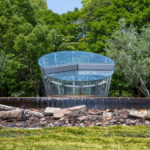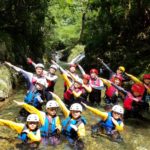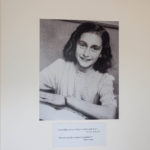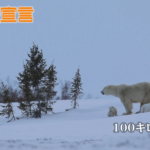Communicating the Reality of the Atomic Bombing and the Importance of Peace at Home and Abroad, from the Perspective of Someone from Outside Hiroshima
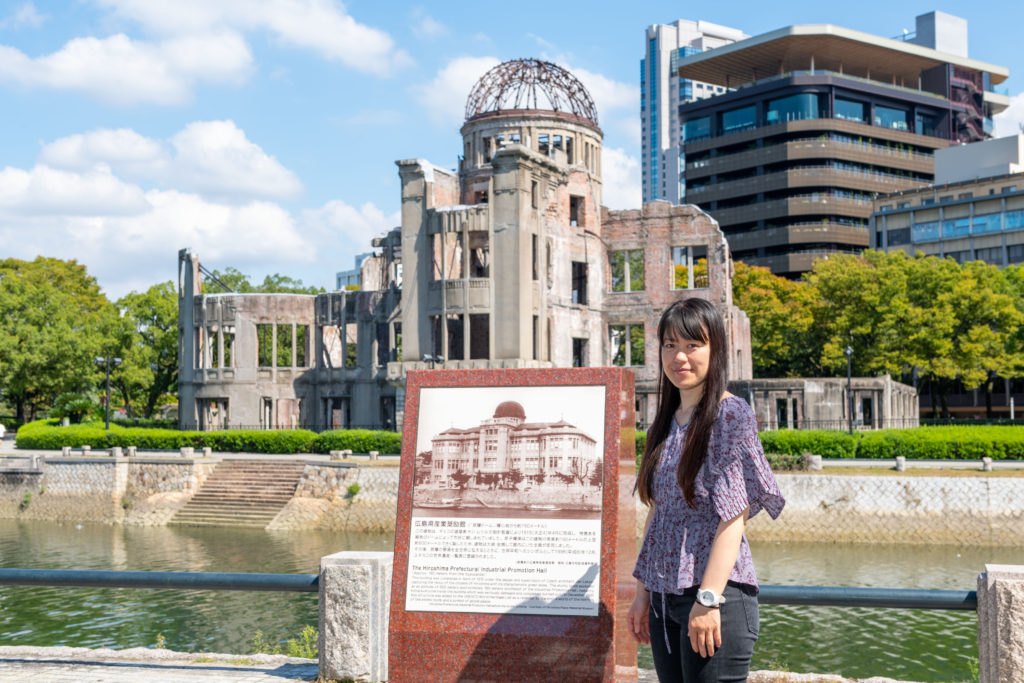
Watanabe Hiroko relocated from Niigata to Hiroshima to work as a Hiroshima Peace Volunteer, communicating the true story of the atomic bombing. Born on August 6, Watanabe says she has felt a connection with Hiroshima as the bombed area from an early age. At the opening of her comments as a volunteer, she asks people a question: “8:15, the time that the atomic bomb was dropped. What were you doing today at that time?” Doing so, she invites listeners to imagine that moment when normal everyday life was stolen from people. We asked Ms. Watanabe about the bitter experience that inspired her to start her activities in Hiroshima, about her current thoughts, and more.
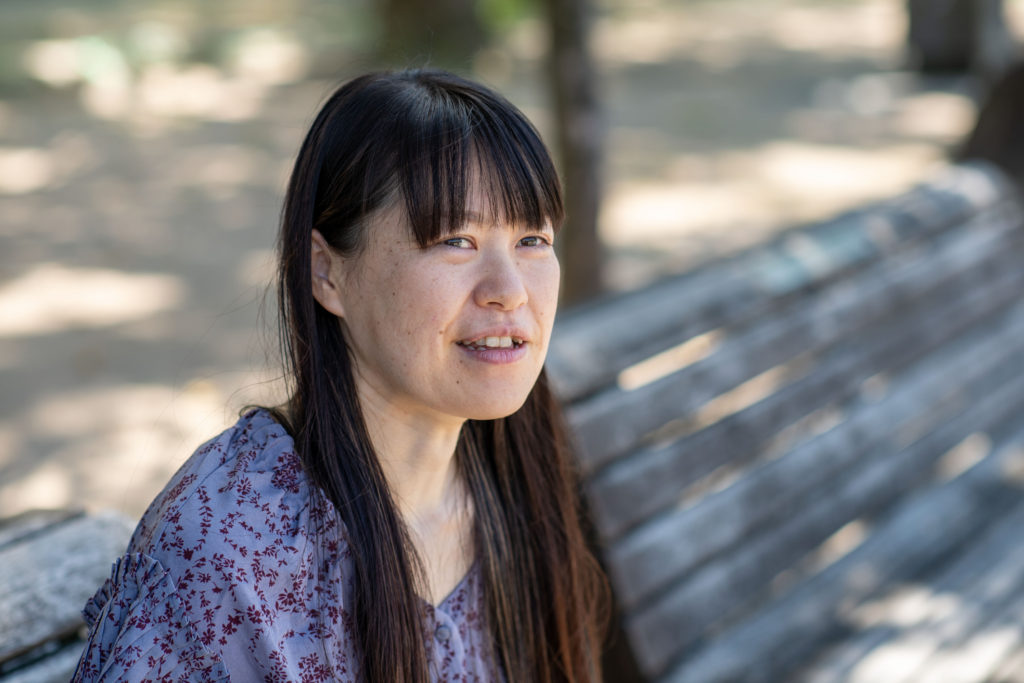
My start as a Peace Volunteer, even moving to Hiroshima, began with my experience in the Philippines when I went there for language study. I was receiving one-on-one instruction from a Filipino, who told me, “I love Japanese people, but I don’t know why our grandparents’ generation had to be killed so much by Japanese people.” Another Filipino told me proudly, “America dropped the atomic bomb on Japan to protect the Filipinos.” I had never been hit so hard by words. I was shocked to realize that I had only thought of the atomic bomb and the war from the perspective of Japan as a victim. I thought that I should study the history of war and the harm that Japan caused, and so from the Philippines, I applied for training as a Peace Volunteer at the Hiroshima Peace Memorial Museum. I had quit work and traveled before, and so resolved to take the plunge and study in Hiroshima.
Actually, I had visited the Hiroshima Peace Memorial Museum before I went to the Philippines. While casually listening to the Peace Volunteers explain the exhibits, I realized that there were a lot of things that I couldn’t understand just by observing on my own, and thought that I wanted to visit Hiroshima again someday. That may have been one of the reasons why I decided to go to Hiroshima when I came across the call for Peace Volunteers.
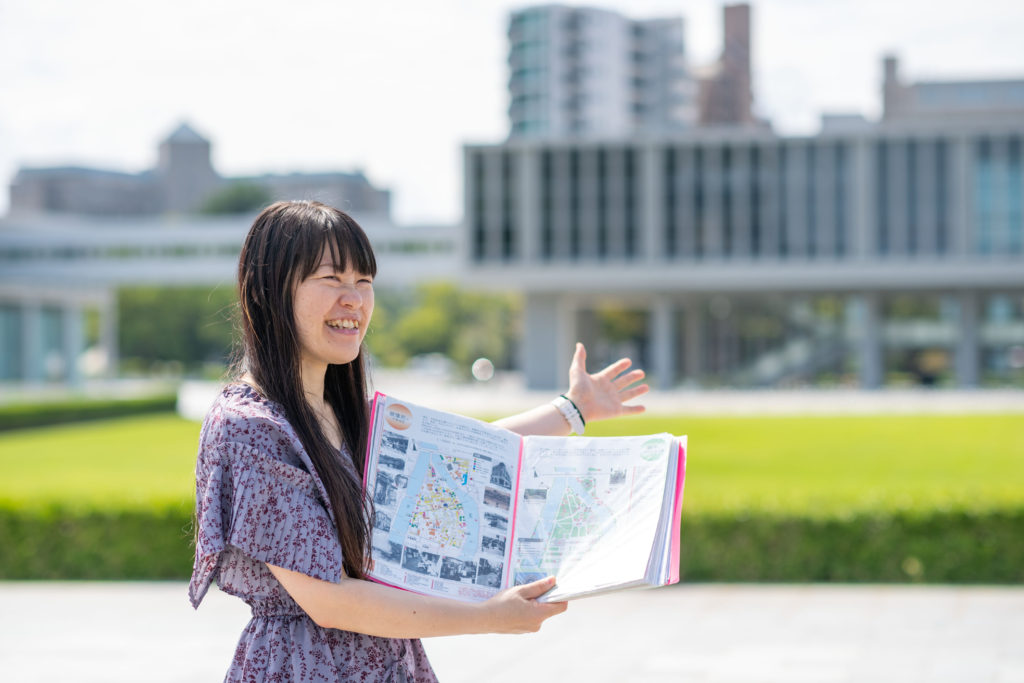
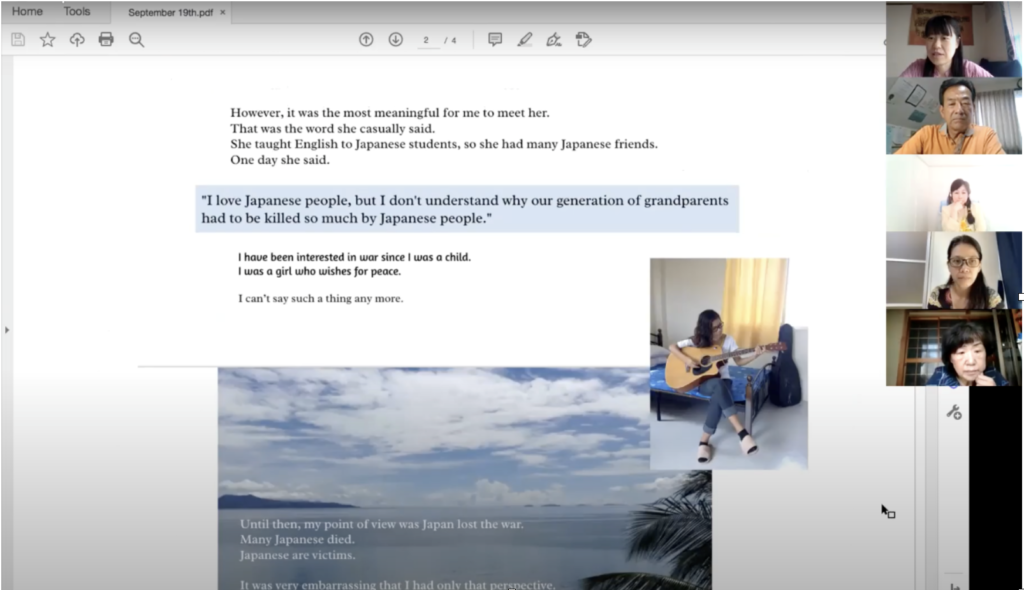
I’m now registered as a Peace Volunteer, and am in charge of explaining exhibits in the Peace Memorial Museum and Peace Memorial Park. Unfortunately, the COVID-19 pandemic has meant that I’m not able to be as active as I’d hoped. So, I’m taking advantage of this time to participate in online study sessions with a group that includes other volunteers, and to prepare for giving explanations in English. The first thing I tackled was reading the book The Complete Story of Sadako Sasaki and the Thousand Paper Cranes, by an American writer and Sadako Sasaki’s older brother Masahiro. Sadako, the model for the Children’s Peace Monument, died while folding paper cranes as she fought leukemia caused by exposure to the atomic bomb’s radiation.
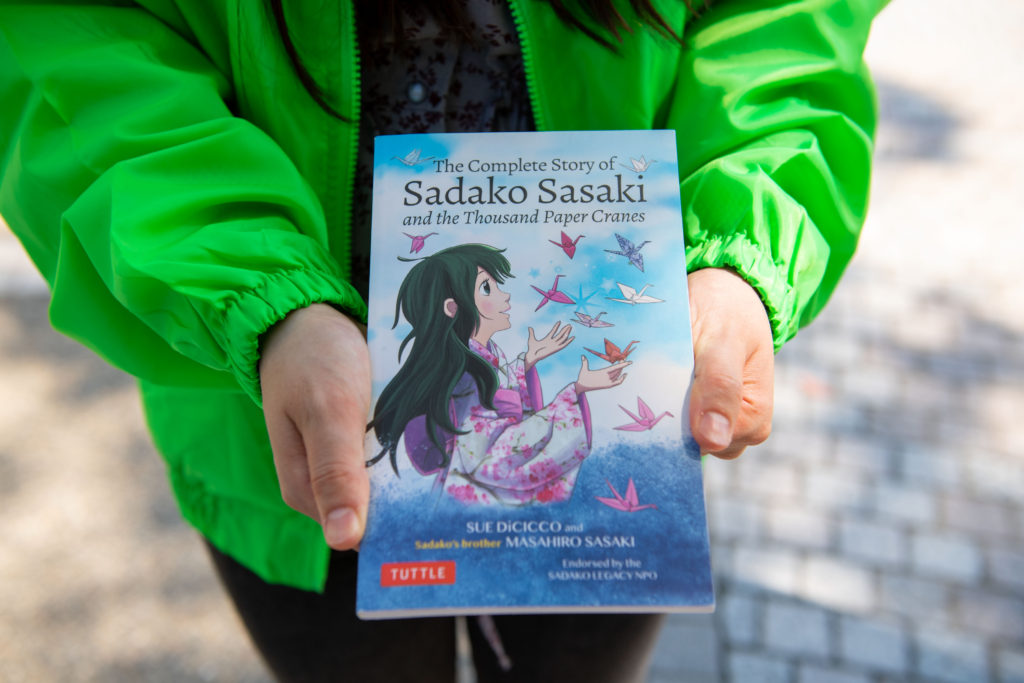
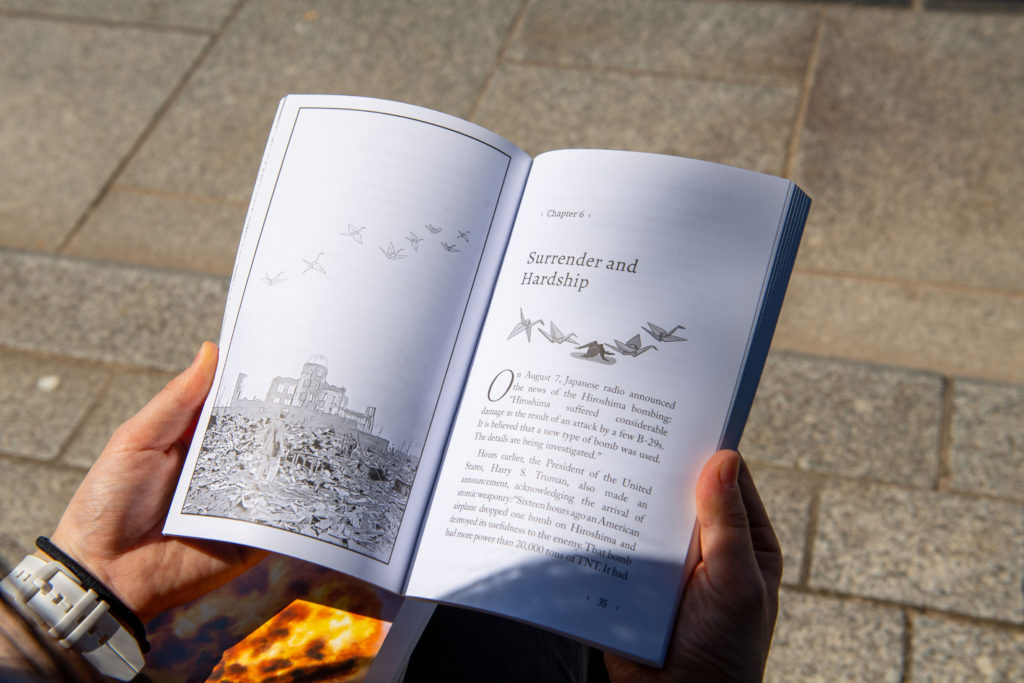
This book lets me look into the story of Sadako, who is not well known, and lets me work anecdotes from new perspectives into my explanation of the Children’s Peace Monument. I’m now working on translating books used in elementary school studies in the United States and English-language materials that form the basis of knowledge about the war, and am thinking about how to make use of these in my explanations.
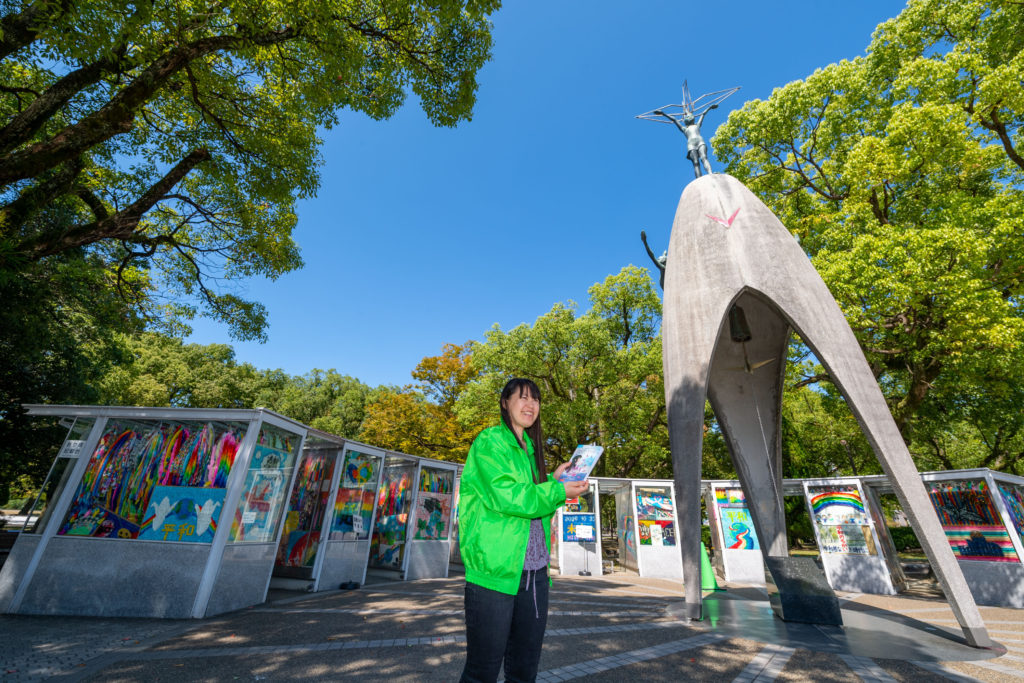
There is an online guide working with someone who’s not a Peace Volunteer, and involving Pearl Harbor and the continental United States. As it’s difficult to act a guide on-site, we’re trying things such as taking videos of guides using photos and PowerPoint presentations of monuments, for showing at events.
One purpose of these efforts is to learn about different perspectives on the war. When I’m acting as a guide in Hiroshima, I inevitably focus on the damage that Japan suffered. But Japan also has a role as a perpetrator, and after learning about the damage that countries other than Japan suffered, I realize there is a difference between explaining this and not doing so. Until now, the volunteers have acted individually, but to gain multifaceted perspectives, we’re trying to study together and to share what each of us knows with other volunteers. Through new activities, I feel that I’m drawing closer to what I’ve always wanted to do. I’ve also reaffirmed the strength of will and the backgrounds of the volunteers who began working alongside me.
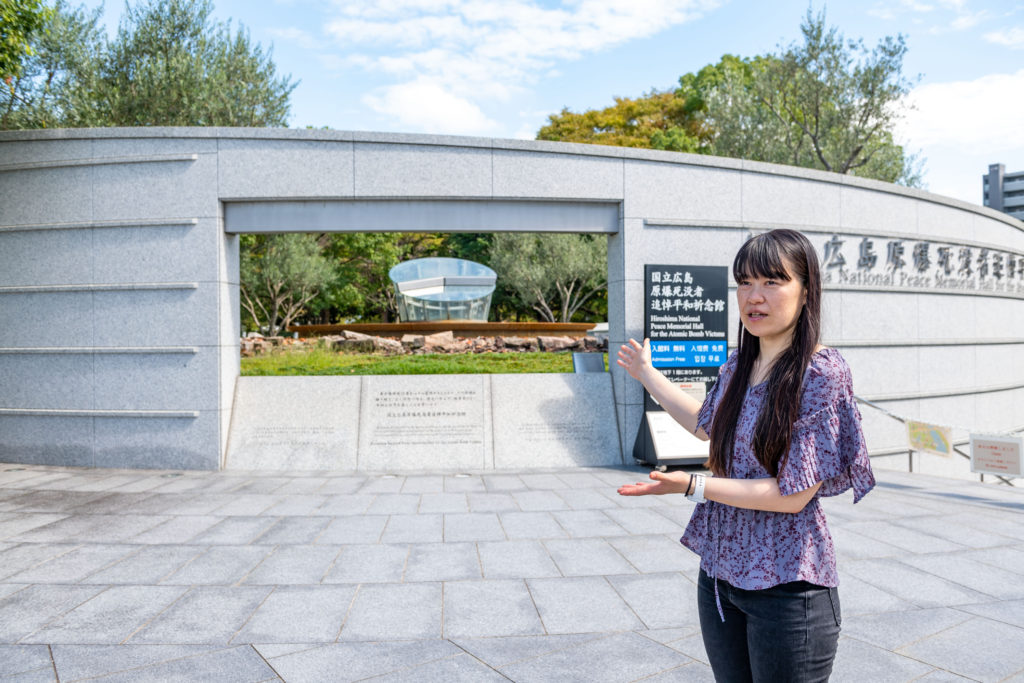
Among the volunteers are many people whose family members experienced the atomic bombing. Comparing their talk centered on family experiences, and talk that is based on knowledge as in my case, I feel that the content and the communication are totally different between the two. People in Hiroshima hold a really strong desire to convey their message. While I came to Hiroshima with a lot of enthusiasm, I wondered at times whether I should really continue to volunteer. I was able to encourage myself to continue by realizing that I held a perspective as someone who was unaware of the reality of the atomic bombing. There is a difference in knowledge of the war and the atomic bombing between the people in Hiroshima who have been educated about peace and people who have not, a difference that I felt during training as someone born in Niigata. When I communicate what I grasped and was impressed by from that perspective of mine, many people thank me and tell me that they’ve learned many new things.
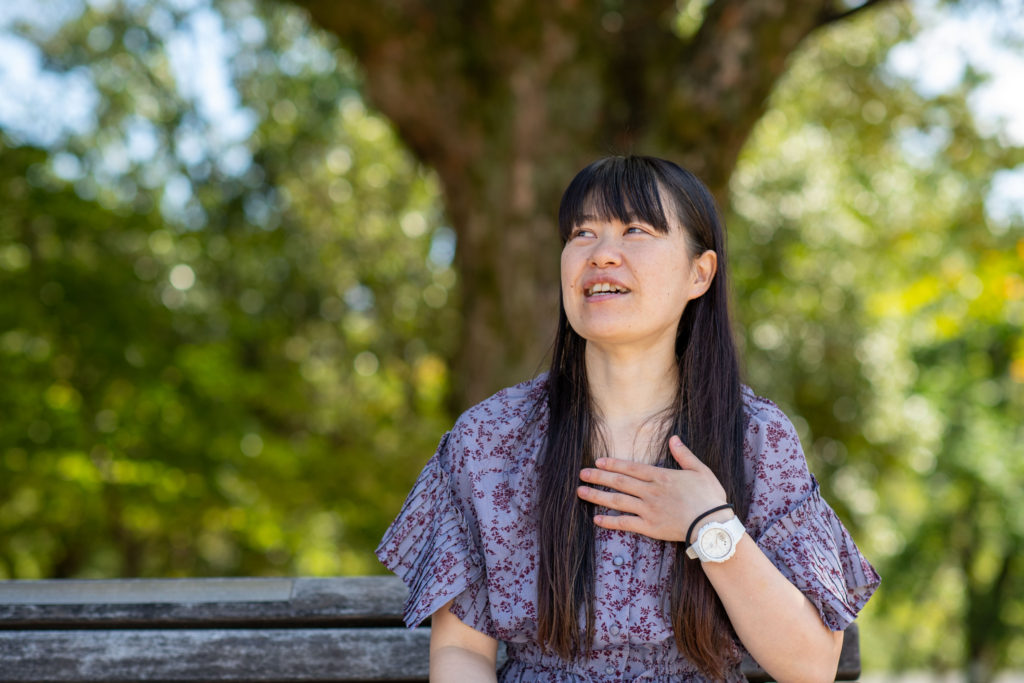
Looking ahead, in addition to offering explanations in English, I want to study more about the war itself from different perspectives. Nagaoka, a city in my home prefecture of Niigata famous nationwide for its fireworks displays, was hit by air raids. The Nagaoka Fireworks Festival, which has a history stretching back before the war, was revived right after the war as a memorial service for the victims of the air raid and with wishes for reconstruction and peace. Even in Honolulu, where Pearl Harbor is located, fireworks from Nagaoka are launched as a memorial service and with wishes for peace. That’s something I learned after coming to Hiroshima. I strongly feel that I also have to study much more about other topics, including what happened during the war in the Philippines, the starting point for my activities.
Tags associated with this article



